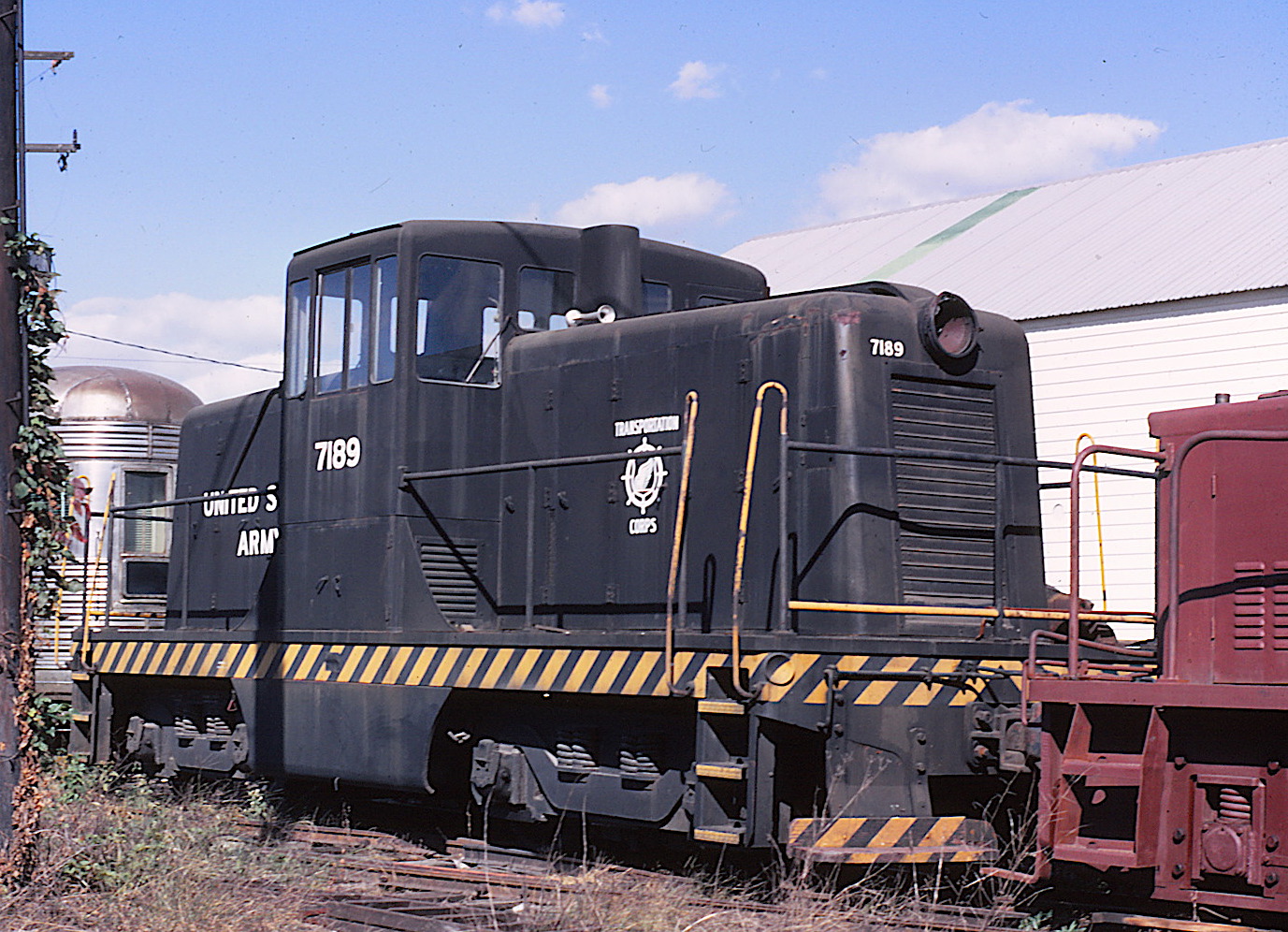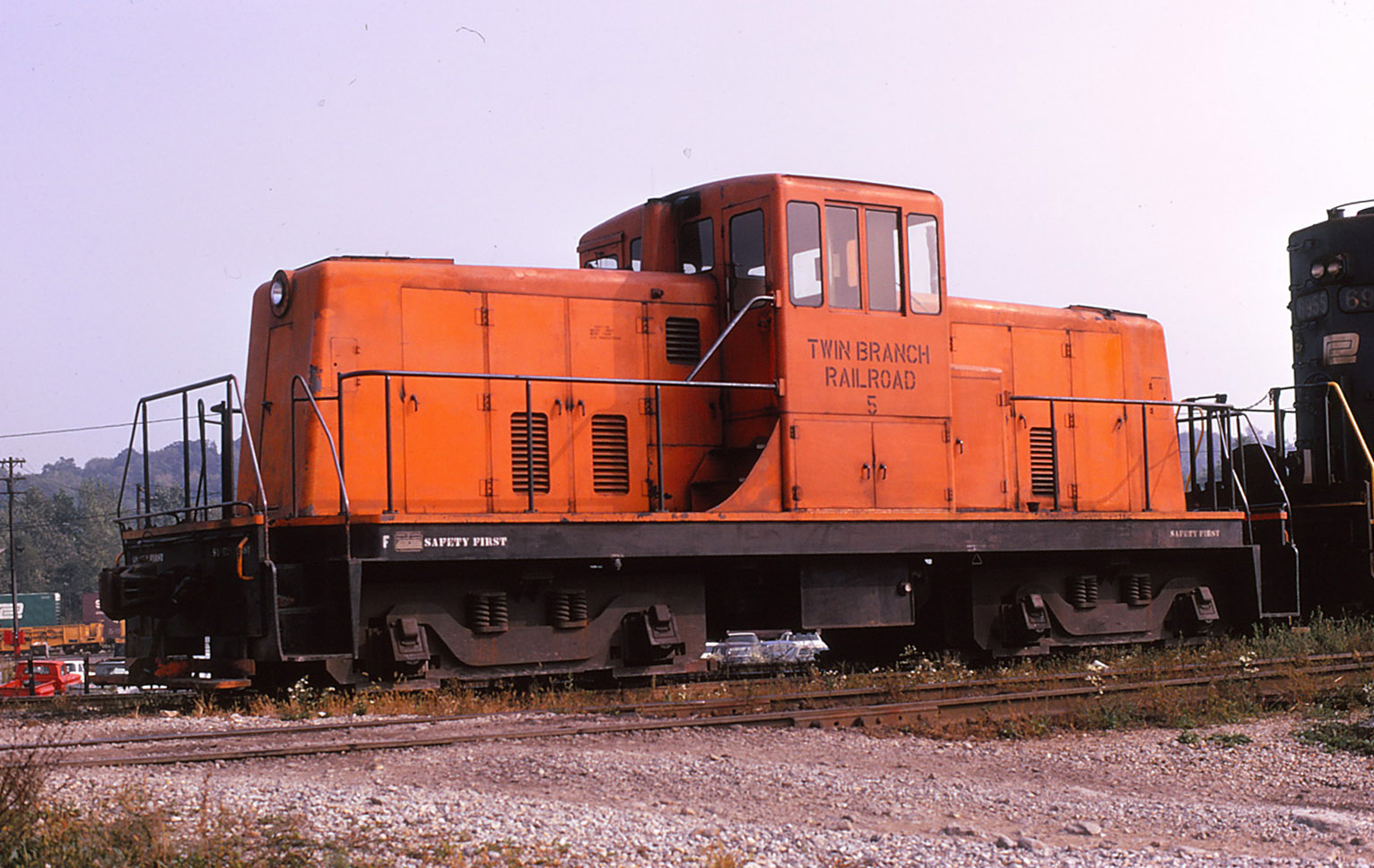General Electric's 65-Tonner |
|||
|---|---|---|---|
 U.S. Navy 65-Tonner #65-00599 at Tacoma, Washington in 1989. (Tom Hirsch photo) |
|||
|
The U.S. Government had been traditionally the single biggest buyer of small locomotives. From mid-1941 to the end of World War II, the U.S. War Department purchased nearly 140 new 65-ton locomotives from General Electric. Although the U.S. Military acquired a small number of additional 65-Tonners during the Korean Conflict, the real emphasis was placed on larger locos with greater capacity. The assumption here is that as newer weapon systems grew bigger and heavier, larger locomotives were needed to haul them. The end of hostilities in 1953 resulted in many of the small, medium and large locomotives being placed in storage, and later made available to common carriers and industrials through public auction. Although they swapped their military garb for more colorful attire, many 65 center cabs are still in service across the U.S., or rest proudly in museums. Here are a few tips to help distinguish a GE 65-tonner from an 80-tonner.
| |||
| Spotting Features | |||
 U.S. Army #7189 U.S. Army #7189 Columbus, Oh in November 1969 (Ray Sabo photo **) blank |
Early 65-Tonner (Introduced in 1940)
|
||
 Twin Branch Sharonville, Ohio on 8 October 1973. (Dan Dover photo **) blank |
Most Common 65-Tonner (Introduced in 1948
|
||
 Arcade & Attica #113 Attica, New York (Joe Bishop photo) |
Narrow Hood 65-Tonner (Introduced in 1958)
|
||
** Photo from R. Craig collection | |||
| Formatted by: R.Craig
New: 1 November 2019
|
|||